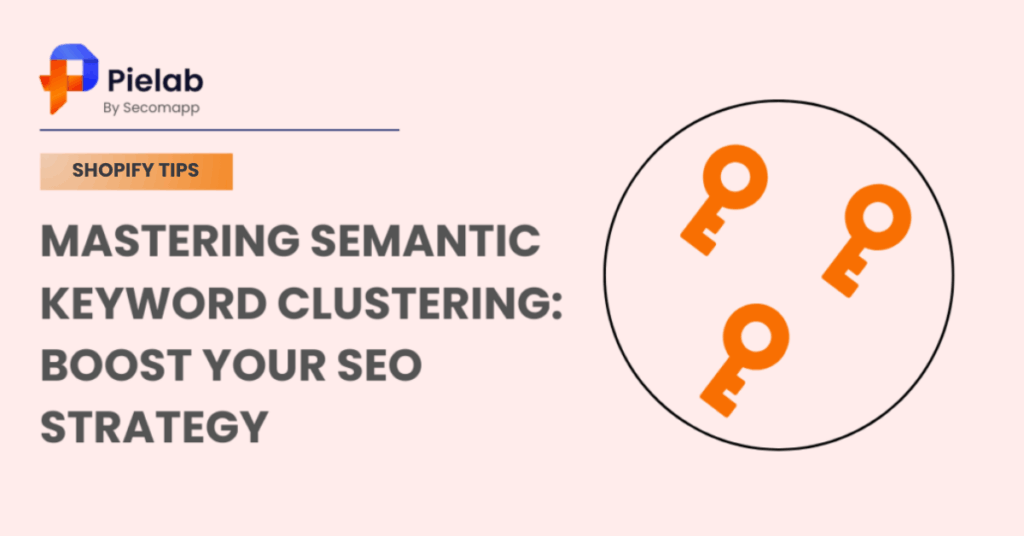AI can create content much faster than people, which is probably the biggest benefit. It would take a human writer much longer to do all the research and write it. This can help you shorten time and effort when creating content. AI also helps with language localization for various geographic areas and can reformat content to fit many circumstances.
Semantic keyword clustering is the process of grouping keywords based on their meaning, intent, or contextual relevance, rather than just their similarity in wording or exact-match phrases. The goal is to organize keywords in a way that reflects how users search and what they intend to find, which can improve SEO strategies, content planning, and overall search engine visibility.
For instance, if “vegan recipes” is your primary topic, your keyword cluster might include terms like “vegan breakfast ideas, quick vegan meals” and “healthy vegan dinner recipes.” And if a user searches for the keyword “skin care”, maybe they want to access a specific topic like “skin care routine steps”, “skin care products”,…

Benefits of Semantic Keyword Clustering
1. Boosted Visibility: By organizing your keywords into clusters, it makes it easier for search engine crawlers to discover and index content tied to particular search terms, which increases the chances of your content showing up in search engine results pages (SERPs).
2. Increased Ranking Opportunities: Clustering keywords can really boost a webpage’s relevance, giving it an edge over pages that don’t use this strategy, which can lead to improved search engine rankings.
3. Less Competition: Focusing on long-tail keywords and less competitive phrases through keyword clustering can improve your chances of ranking higher in search results.
4. Simplified Optimization: With keyword clustering, you can optimize your content more effectively, making sure you’re always targeting the most relevant keywords for your page.
How to create an SEO keyword cluster
Step 1: Conducting keyword research
Start by identifying your core topic based on your target audience’s needs and your business goals. The topic should be broad enough to cover various subtopics but specific enough to attract relevant traffic.
To organize keywords into topic-focused groups, the first step is to gather a comprehensive list of keywords. Your primary task in developing and marketing your website is to collect as many queries as you can.
There are many ways of doing keyword research. You can use Ahrefs, Google Keyword Planner or SearchPie SEO & Speed optimize for Shopify merchants to analyze search queries that are already in your list. This tool – SearchPie provides you with all the data you need, including:
- Search volume
- Trend
- Competition
Besides, after exploring the keyword, you can track its position and check the audit keyword with SearchPie.
To check the keyword by word count, use the filter in SearchPie’s Keyword Research as shown in the screenshot below.
Furthermore, you can add other filters like range, competition, keyword to see more details of the keyword.
Step 2: Begin by creating list of keywords
Before deciding which list of keywords to cluster, conducting keyword research is very essential for all store owners. Utilize the Ahrefs or Semrush for supporting your research, or opt for alternative tools if you are a Shopify merchant like SearchPie SEO & Speed optimize, Avada, AI SEO Optimizer,…
Step 3: Creating topic clusters
With your comprehensive list of keywords in hand, it’s time to start forming keyword clusters and discard any unnecessary queries. We’ll explore the differences between manual and automatic grouping methods, and then go through the steps required to organize your queries effectively.
Manual semantic keyword clustering strategy
To create keyword clusters manually, you can filter the list by their word roots or type of intent. For example, you have a huge list of queries about ‘project management tools’.
- You can look for different types of phrases while keeping search intent in mind. Consider questions like ‘how to choose a project management tool’, ‘is there a free project management tool’, or ‘best project management tool for teams’. To determine the keyword intent, search these terms on Google and review the top-ranking sites to understand what users are expecting. This method allows you to group queries more effectively.
- You can analyze terms appearing in the search results, such as ‘task manager’, ‘collaboration software’, ‘team planner’, and ‘workflow organizer’. Keywords containing similar terms can then be grouped into clusters.
Automated semantic keyword clustering strategy
Instead of manually creating keyword clusters, you can consider using tools like SE Ranking, Key Clusters, Keyword Insights to shorten your grouping process.
These tools almost cover some features like keyword discovery, keyword clustering, search intent analysis.
For example, we’ll go through the instructions of how to automate keyword clustering strategy with SE ranking.
To begin organizing keywords in SE Ranking, first, choose your desired region and, if you wish, the interface language. Concentrate on the specific regions where you want to promote your website, and if you’re targeting multiple languages, group them separately for each one.
Next, select the level of grouping accuracy and the method for grouping-these choices will impact your results significantly.
Finally, it’s time to add your keywords. You can either type them in yourself or import them from a file. Decide if you’d like to check the search volume in addition to grouping (this can also be uploaded separately), and then go ahead and run the tool.
Now, just sit back for a moment while our system searches for matching results and organizes your keywords according to the number of similar pages in the top 10 results.
Step 4: Analyse your data
When you complete semantic keyword clustering, the next important step is controlling your process and result. You can manage it by using SEO apps. In this article, we pay more attention to apps for Shopify merchants. So, as the information we discussed above, we continue to find out keyword audit and position tracking in SearchPie tool.
With Audit keyword, you can check and fix some important components like page SEO audit, schema and snippets and Google Index.
You can check the ranking of target keywords in Position checking.
Step 5: Write your content
After defining the topic and all keywords relevant to it, you need to turn keyword clusters into content briefs (or even fully written content pieces) by clicking one of the buttons here and sending it to our content brief editor.
You can develop your content manually or use an AI tool to generate outlines with Keyword Insights or SearchPie.
Wrapping Up
Semantic keyword clustering is an effective SEO strategy that can enhance your content optimization, broaden your vocabulary, and increase your keyword exposure.
Using keyword clustering makes the content creation process easier, helping you enhance your website’s structure and authority. This guide offers valuable insights and detailed instructions which can lead to remarkable increases in traffic and engagement.
By using tools such as SearchPie, SE Ranking, you can simplify the task of organizing keywords. This automated method not only saves time but also offers important insights into the search intent of your target audience, enabling you to create more relevant and effective content.



Pingback: Lead Generation Mistakes in Email Marketing